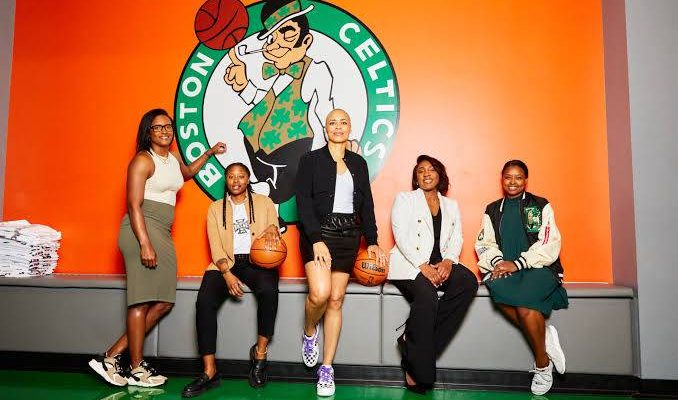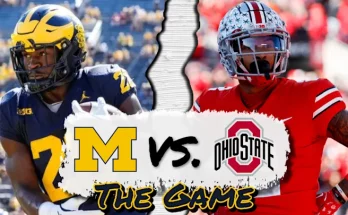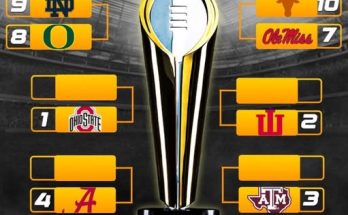Breaking news in the basketball world rarely extends beyond the court, but when it does, it usually signifies something larger than wins, losses, or championships. That is precisely the case with Allison Feaster, the Boston Celtics’ Vice President of Player Development and Organizational Growth, who has steadily risen to become one of the most influential executives not only in the franchise’s storied history but across the entire NBA landscape. Her impact goes far beyond roster moves or development plans; she is shaping the DNA of an organization that prides itself on legacy, championships, and cultural identity, while simultaneously breaking down barriers that for too long limited representation at the highest levels of professional sports. The announcement that she is taking on an even greater leadership role, serving as a central visionary for player development, culture-building, and diversity initiatives, signals both a recognition of her immense talent and a monumental shift in how leadership is defined within the league.
Allison Feaster’s journey to this point is remarkable not simply because of her achievements but because of the tenacity and perspective she has brought to every role. A Harvard graduate who excelled on the court long before entering the executive suite, she built her reputation as someone who could blend intellectual rigor with a competitive spirit. In the NBA environment, where the balance of analytics, emotional intelligence, and cultural competency often determines success, Feaster stands out as the rare leader capable of harmonizing all of these elements. As she now steps into a position that will allow her to shape the Celtics’ internal culture as much as their player development strategies, it is impossible to ignore the symbolism of her ascent. For decades, the Celtics have represented both excellence and controversy in the conversation around race, leadership, and inclusion. That one of the NBA’s most historic franchises has entrusted Feaster with such a critical role is evidence of a broader institutional commitment to evolving past old paradigms and embracing new forms of leadership.
At its core, Feaster’s work is about ensuring that players do more than just perform on the hardwood. Her role touches on the human side of professional sports, which is often overshadowed by trade rumors, playoff runs, or statistics. Every season, players enter the league with immense physical gifts, but what separates long careers from short-lived stints often comes down to how they are supported mentally, emotionally, and socially. Feaster has championed programs that emphasize leadership skills, financial literacy, mental health awareness, and personal growth, recognizing that a player’s long-term trajectory depends on much more than how many points they score or rebounds they collect. By establishing frameworks where players can thrive as individuals, she has reinforced the Celtics’ reputation as a team that values holistic growth. In a league where superstars hold unprecedented power, her ability to align organizational culture with player empowerment has been nothing short of revolutionary.
Her role is equally significant in the way it addresses systemic barriers. For years, the NBA has wrestled with the paradox of being a predominantly Black league led primarily by white men in the front office and ownership suites. Women, and particularly women of color, have been historically underrepresented. Allison Feaster embodies the changing of that tide. As a Black woman in one of the most powerful positions in professional basketball, her visibility is more than symbolic; it sends a clear message that the pathways to influence are expanding, even in spaces that were once closed. Young athletes, aspiring executives, and fans can now point to her as a living example that excellence and leadership know no gender or racial boundaries. The weight of representation is heavy, but Feaster has carried it with grace, never positioning herself as an outsider demanding recognition but as a leader whose competence makes her indispensable.
What separates her from other executives is her vision of culture as a competitive advantage. For Feaster, culture is not just about locker room harmony or a few motivational speeches. It is about creating an ecosystem where accountability, respect, and collaboration flourish. In an era where player movement is frequent and loyalty is no longer guaranteed, cultivating an environment that players want to be part of is invaluable. Feaster has been instrumental in ensuring the Celtics remain attractive not only because of their championship aspirations but because of the way the organization treats its people. Players often cite her as someone who listens, understands, and advocates for their needs in ways that go beyond basketball. This type of leadership fosters trust, and trust translates into performance on the court. When an organization invests in its people at every level, it builds resilience that can withstand the pressures of an 82-game season and the grueling playoff grind.
Her influence extends beyond the Celtics and touches the broader NBA ecosystem. League offices and other franchises are paying close attention to how Boston has integrated diversity and inclusion into its organizational fabric, with Feaster leading the way. She has become a thought leader in conversations about gender equity, racial inclusion, and leadership development across the league. Initiatives she has championed have inspired similar efforts in other franchises, signaling a ripple effect that could reshape the NBA’s culture for generations. In many ways, she represents the future of basketball leadership, where the boundaries between on-court performance and off-court culture are blurred, and success is measured not only in wins but in the positive impact on lives.
It is important to situate Feaster’s rise within the broader narrative of the Celtics’ recent history. The team is in the midst of competing for championships with a talented roster anchored by stars like Jayson Tatum and Jaylen Brown, and the margins between winning and losing at the highest level are razor thin. Having someone like Feaster in the leadership structure ensures that those margins tilt in Boston’s favor, not just because of the systems she builds but because of the relationships she nurtures. Her ability to connect with players at every level of the organization strengthens bonds, eliminates distractions, and creates cohesion. In a league where chemistry often makes the difference between success and failure, her role cannot be overstated.
The significance of this moment also lies in what it means for the future of women in basketball. Feaster’s promotion shatters a glass ceiling that for decades seemed unbreakable. While the NBA has made strides in hiring women as assistant coaches, referees, and analysts, front-office leadership remained one of the last bastions of male dominance. Feaster’s rise to an executive role that directly influences both basketball and organizational outcomes is proof that the landscape is changing. This is not tokenism; it is the recognition of merit and capability. Her success opens the door for more women to follow in her footsteps, whether as executives, coaches, or thought leaders. The barrier-breaking nature of her achievement will resonate for years, serving as inspiration for future generations.
But beyond the optics and the groundbreaking symbolism lies something even more important: results. Feaster’s track record of impact is measurable, from the programs she has developed to the organizational improvements she has spearheaded. The Celtics’ reputation as a player-first organization has grown under her watch, and the development pipeline continues to produce players who are not only skilled but prepared to handle the demands of professional life. These outcomes validate the philosophies she has championed and prove that her vision is not abstract theory but a practical blueprint for success. In a results-driven league, that credibility matters.
Her story is also one of resilience and authenticity. Navigating the corporate and competitive world of the NBA as a woman of color is no small feat. Feaster has done so without compromising her values, remaining grounded in the principles that guided her as a player and as a person. She has spoken openly about the importance of mentorship, the responsibility of leadership, and the power of representation. These values resonate not just within the Celtics’ walls but across communities that see in her a reflection of what is possible. She is not just a basketball executive; she is a role model whose influence stretches far beyond the game.
As the NBA continues to evolve, Allison Feaster’s role will only grow more significant. The league is increasingly defined by global influence, social responsibility, and cultural relevance. Leaders who understand how to bridge the gap between the game and society will shape its future. Feaster’s unique blend of basketball knowledge, organizational insight, and human-centered leadership positions her as one of those transformative figures. The breaking news of her barrier-shattering promotion is not just a milestone for the Celtics; it is a milestone for the entire sport. It represents the dawn of a new era where leadership is more inclusive, more empathetic, and more effective.
In the final analysis, Allison Feaster’s story is a reminder that progress is possible and that when organizations invest in the right people, the results reverberate far beyond their own walls. The Celtics have placed their trust in a leader who embodies vision, strength, and compassion, and the NBA is better for it. As she continues to shape the future of the game, one thing is certain: the barriers she has shattered will not be rebuilt, and the legacy she is creating will inspire countless others to believe that they, too, can lead, innovate, and transform. This is not just breaking news—it is the beginning of a narrative that will continue to define the future of basketball leadership for decades to come.



